If you live in the UK and head to your local pond, urban lake, or nearest river, you’ll stand a good chance of seeing a moorhen. But then you’ll also stand a good chance of seeing one in parts of Asia, Africa, America, and all over Europe. In some places they are known as the ‘water hen’, in others the ‘reed hen’ – both names that reflect the habitats where this species is most likely to be found.
However, when you stand next to your local loch and watch the coots scrapping with the swans, ducks and gulls for bits of bread and seed, the moorhen will most likely stick to the fringes of the furore. And while they may be known as the ‘water hen’, they spend more time out of the water than you might imagine.
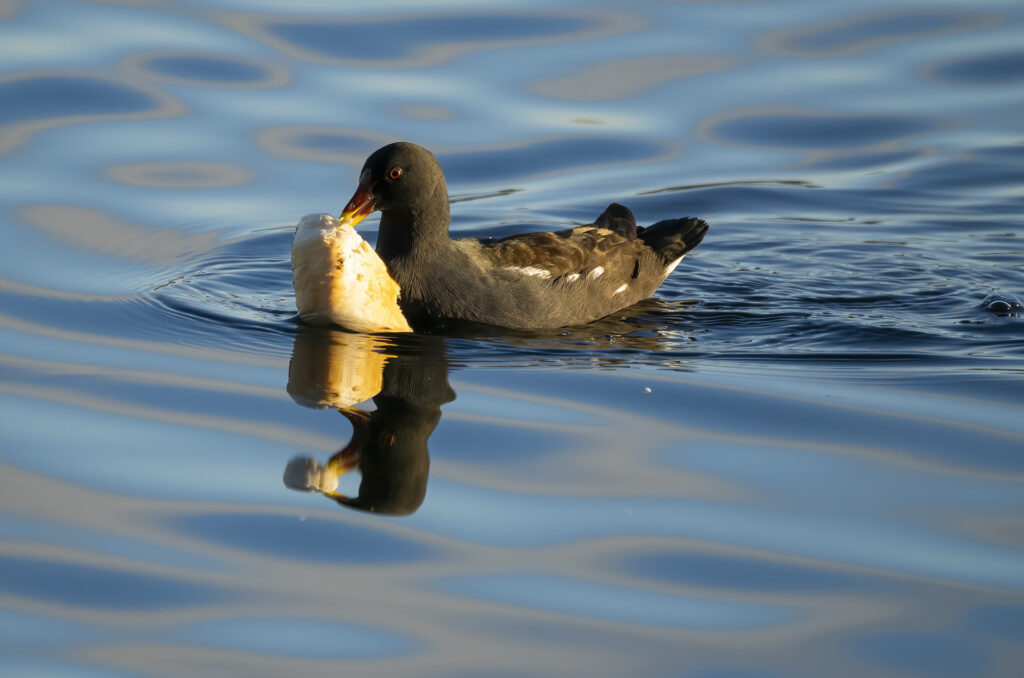
Legging it
Moorhens are an often overlooked species, but one that’s worth a second look. The adults are easily recognised by a bright orange/red bill with a yellow tip and their red eyes. They have dark plumage with a hint of blue/green gloss and a white under-tail, which they often flick. This flicking seems like a warning signal, both for predators and perhaps also for family members. The juveniles are attractive shades of brown and white and the chicks are covered in dark down and sport bright red-orange beaks and blue heads.
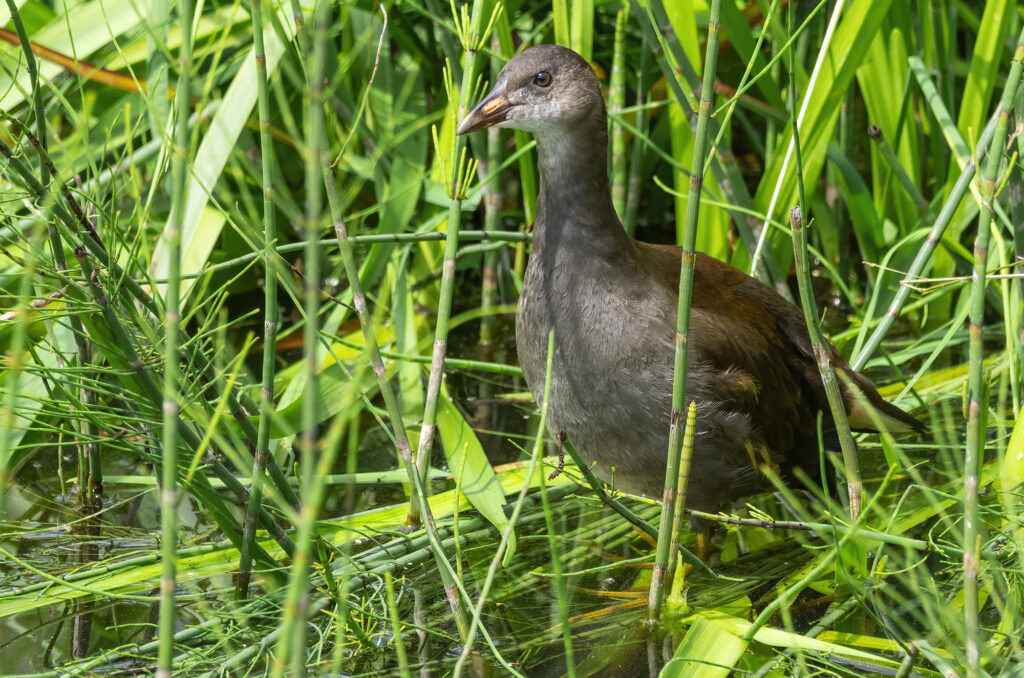
But, being a member of the rail family of birds, the moorhen’s most striking feature is what allows it to master the marshes – its strong legs and long toes that mean it can walk gracefully on floating vegetation or soft mud.
However, despite being a common bird that many people are familiar with, moorhens have a secretive nature. Their ability to live in a variety of habitats and their omnivorous diet (everything from berries to small fish) can make them tricky to spot, particularly in more rural areas. Listen out for an explosive ‘kurr-uk’ or ‘Kruk’ call from nearby vegetation to be alerted to this bird’s presence before accidentally flushing it.
Messy nesters
When a pair of moorhens settle on a site for their nest, both the male and female work tirelessly on gathering nesting material, carrying reeds and twigs in their beaks. Watching the parents do this means you can discover the location of a moorhen nest, as they are often hard to spot, whether on water (floating or built on existing vegetation) or on land (near water and concealed in dense vegetation). It was this activity that revealed the location of the nest where I captured the image below – from a distance with my long lens and using waterside trees as a screen to avoid disturbing the parent.
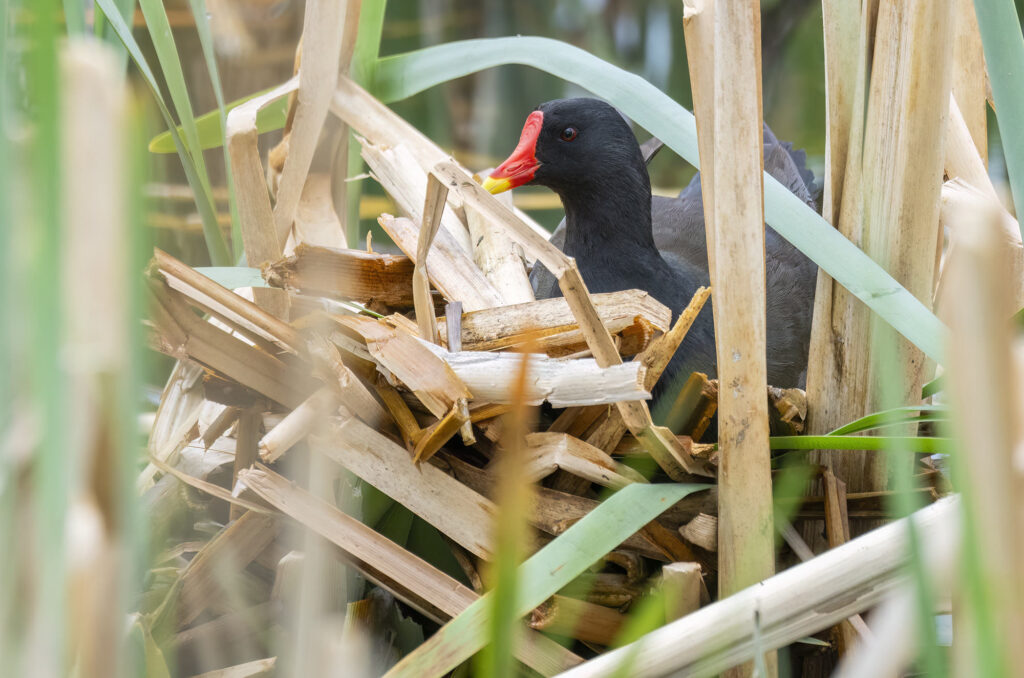
There are rare occasions, however, when a moorhen family will defy expectations and simply nest in the most visible place possible, as happened with the family in the image below, who had built their nest in a tyre hanging from a barge moored on the canal in Hamiltonhill in Glasgow.
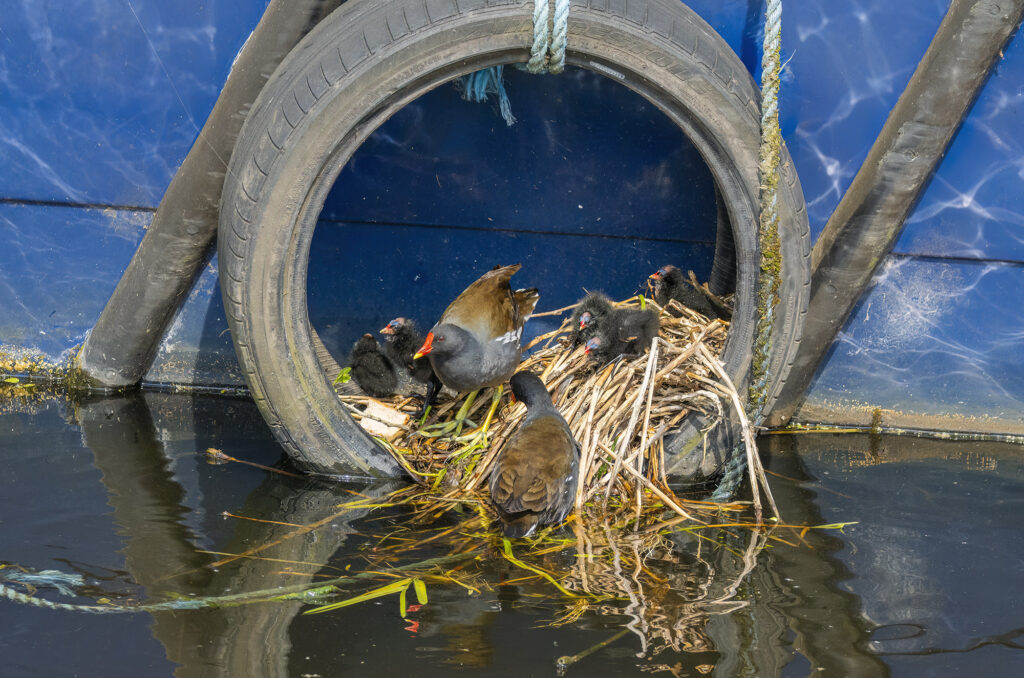
Harsh lessons
For the first few days after hatching, moorhen chicks depend on their parents. You’ll often spot the adults diving for food or foraging on floating vegetation, then carefully feeding the little ones. As the chicks grow, the parents encourage them to explore and learn how to find food independently.
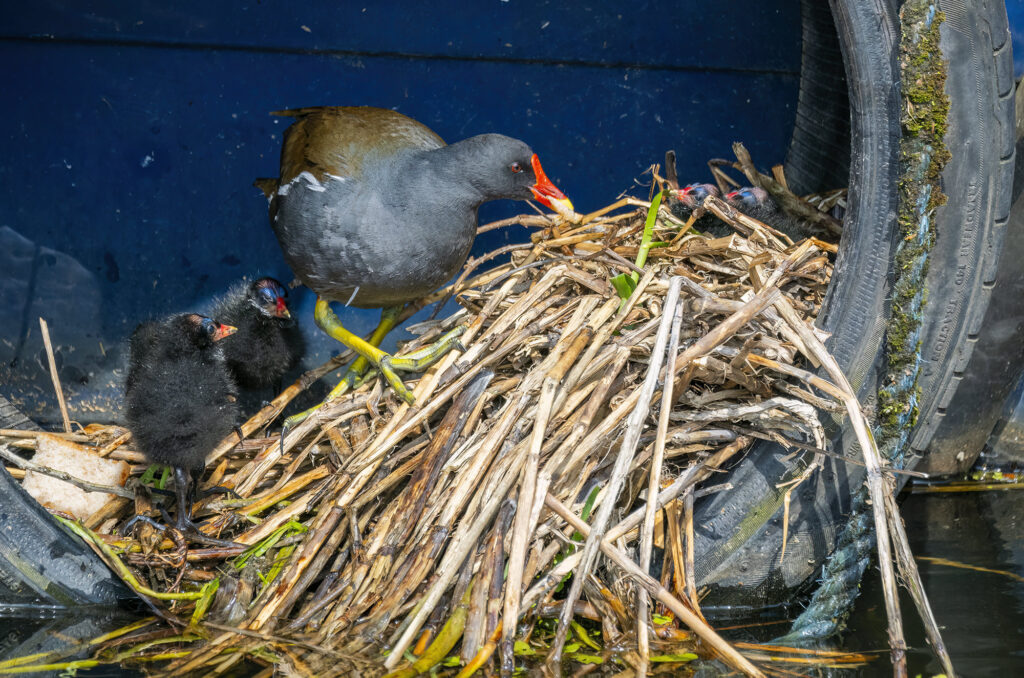
Moorhens sometimes get aggressive with their chicks, and there’s a reason for it. By roughing them up a little – what researchers call “tousling,” where the parents grab and shake the chicks – they’re managing the feeding demands and cutting down on sibling competition. This behaviour pushes the chicks to become more independent and gives the smaller ones a better shot at getting enough food, instead of being overshadowed by their bigger siblings. So, while it might look harsh, it’s nature’s way of levelling the playing field. Moorhen society is also a family affair, with older moorhen chicks often helping their parents rear the younger ones, bringing them food and protecting them from predators – a behaviour known as “aunting”.
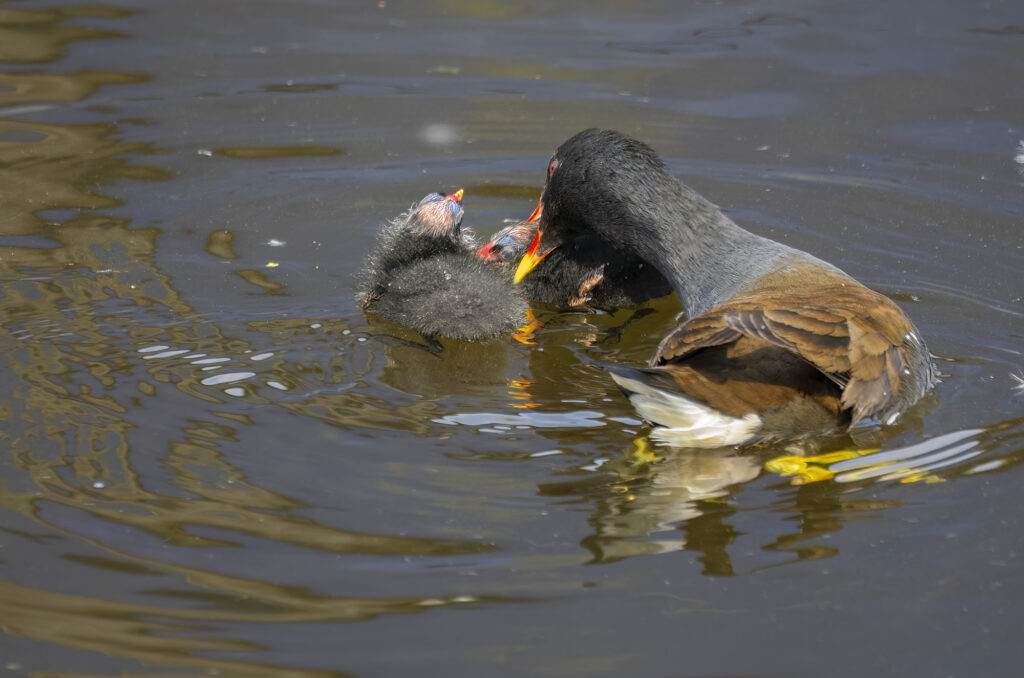
Moorhens may have the reputation of being common as muck wetland dwellers, but if you look closer you’ll see striking and stealthy water birds with fascinating family values. These masters of their marshy habitat are worth pointing your lens at.

